
Wytham Woods: A bug hunt to transform biology
If you go down to the woods today… you are more than likely to find Dr. Liam Crowley and his team searching for insects and other invertebrates among the grasses, deadwood and undergrowth.
The long-established research site at Wytham Woods is key to the Darwin Tree of Life project. As its first Genome Observatory, the site is supplying samples for arthropods and other organisms already numbering in the thousands of species. Once the reference genomes of these species have been generated, scientists at Wytham use the data to probe puzzling biological questions which will help better understand the site’s ecology.
We caught up with Liam on a typical day sample collecting, to find out how he and the team locate new species, what’s still out there to find, and the scientific research already underway using DToL genomes.
Where are we, and what part does it play in the Darwin Tree of Life project?
We’re here in Wytham Woods, just outside the city of Oxford. It is actually a massive area of about a thousand acres, which is a lot larger than people often think.
And it’s not just woods. We do have some fantastic ancient woodland, but we also have a huge diversity of other habitats, such as calcareous grassland and even a fen down in the south east of the site.
In a sense, Wytham is an unparalleled site for research. It’s been under the possession of the University of Oxford for almost a hundred years now. And thanks to that, there are some very long term ecological experiments, including work on birds, badgers and plant surveys.
And now the Darwin Tree of Life project is looking at the genomes of all these different species living in the woods.
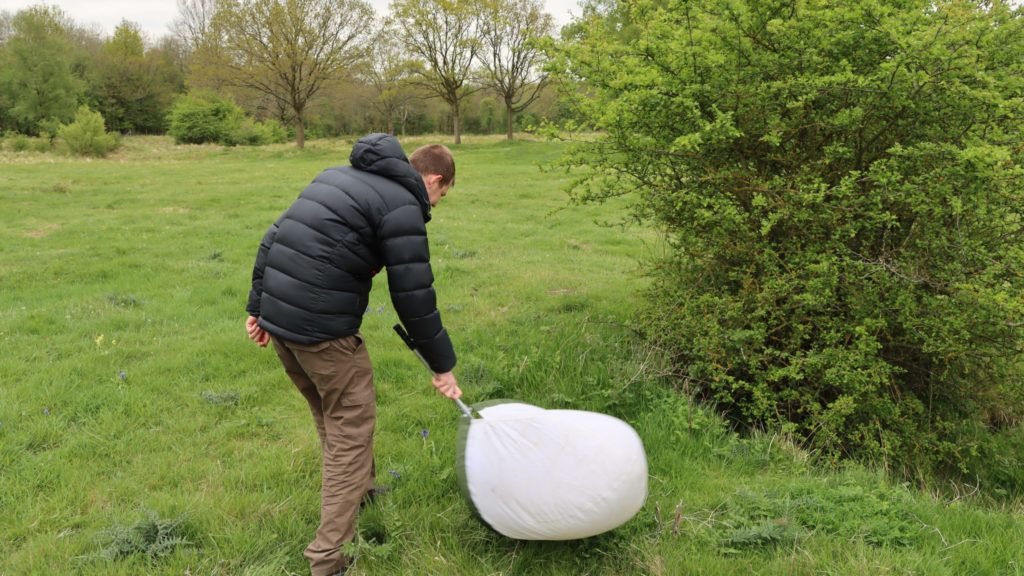
How did you get involved with the project?
At Wytham, Darwin Tree of Life has a particular focus on arthropods – insects, spiders, millipedes, that kind of thing. And I’m an entomologist, so I just love going out, finding and identifying invertebrates.
I found out about a position as a research assistant on the project, which sounded like the dream job. And sure enough, it’s been a fantastic few years going out into different habitats, finding all these new species that I’ve not seen before. Hopefully there are many more yet to find.
What species have we found already?
We have found so many cool species that we didn’t expect to find, but we’re hoping to get many more as we continue to go into new habitats and target new groups.
There have been some fantastic moths, such as the Clifden Nonpareil (Catocala fraxini), which is also known as the Blue Underwing. It’s got these fantastic bright blue hind wings which flash out as it’s flying.
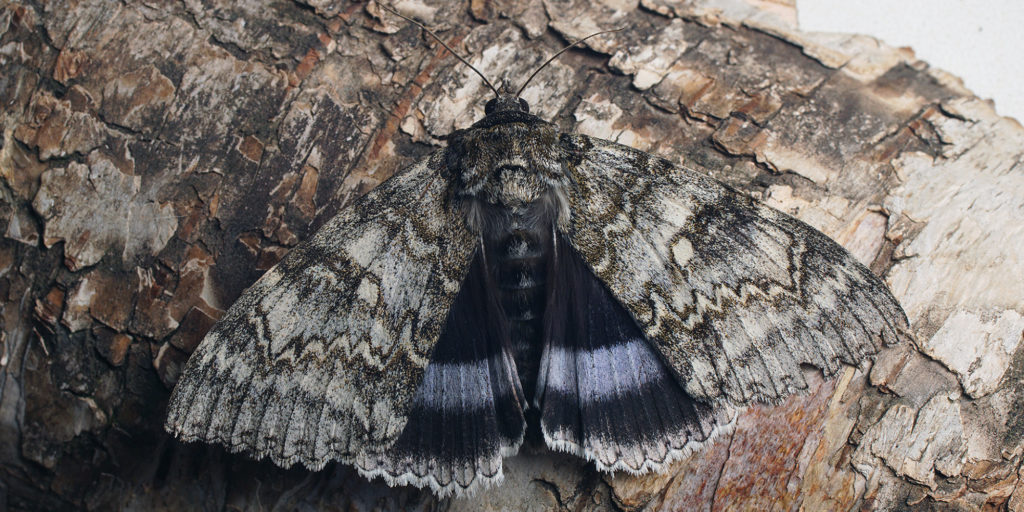
We’ve also found some really interesting beetles associated with deadwood, what entomologists call saproxylic species.
But my particular favourite highlights are the bees. And we’ve had a few really interesting species, such as Nomada hirtipes (the Long-horned Nomad Bee), which is a nomad bee which is a cuckoo parasitic bee on another species, Andrena bucephala (the Big-headed Mining Bee).
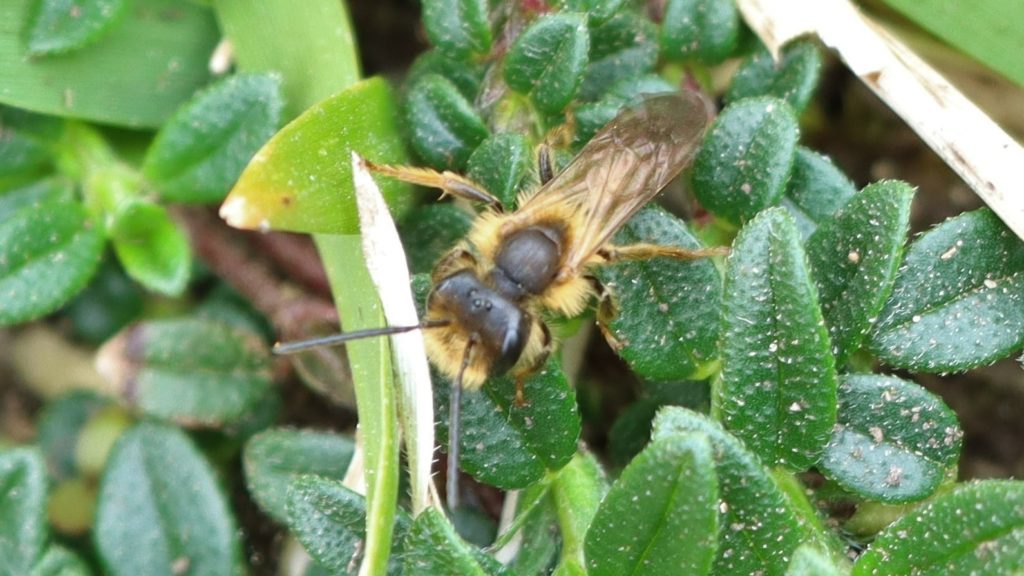
What does a typical day collecting look like?
For example this morning, we started off the day by looking in some calcareous grassland. We were in an old quarry and other patches of grassland. Here we did some sweeping, which is just sweeping our net back and forth over the vegetation to collect all sorts of different species.
Sweeping this morning, we found one of Wytham’s specialties, a really rare beetle. It’s in the family Apioninae, or seed weevils. It’s a tiny little thing called Pseudoprotapion astragali, and you only find it feeding on Wild Licorice (Astragalus glycyphyllos). I’ve been desperately trying to get a photo of a live one on the host plant, so I was really pleased to get that photo to go with the sample for our project.
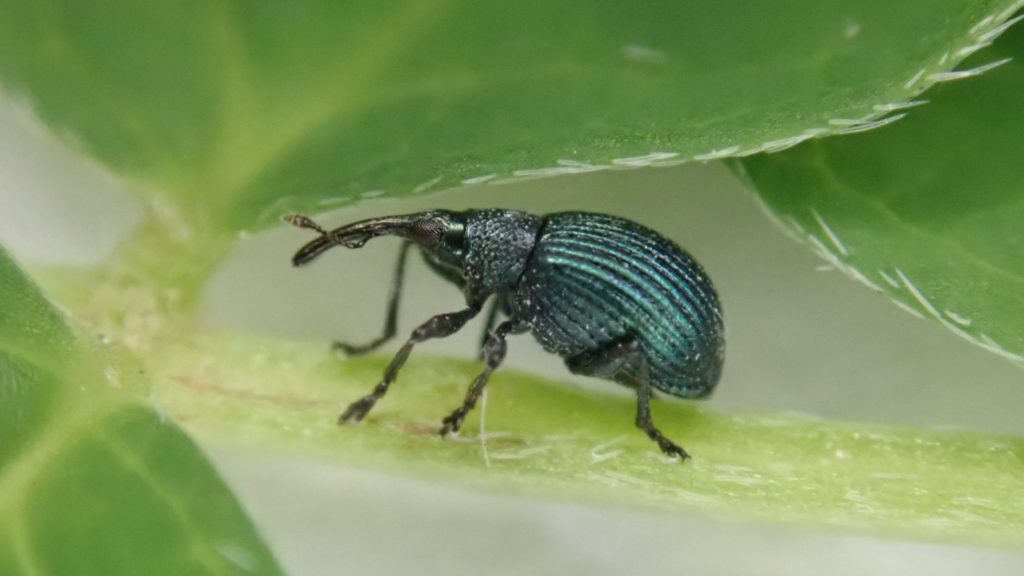
We also did some beating. We were beating young hawthorn saplings and had all sorts of interesting species dropping out into our net: 10 Spot Ladybirds (Adalia decempunctata), an Orange Ladybird (Halyzia sedecimguttata), some interesting ant-mimicking true bug in the family Miridae.
And we found an interesting beetle as well, Lochmaea crataegi (the Hawthorn Leaf Beetle), which will be a new species for genome sequencing.
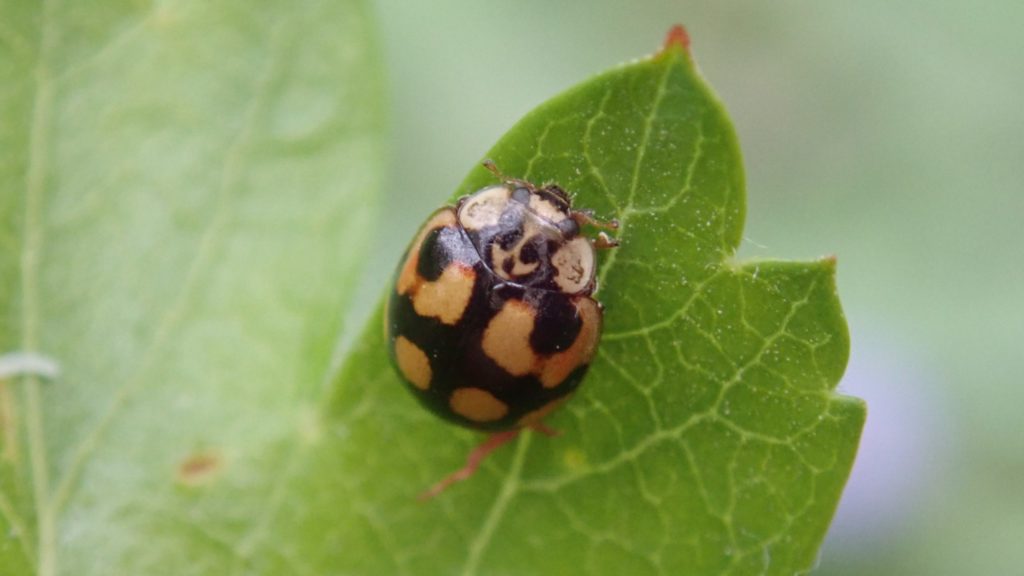
Which species are still out there to be found?
We’re hoping to get many more as we continue to go into new habitats and find new target groups. These largely reflect groups that we haven’t been able to drill into up to this point, things that tend to be quite small or quite difficult to identify.
So we’re bringing in people with that specific expertise to look at things like springtails and soil mesofauna and meiofauna.
Do you have any tips for arthropod collecting?
Just look at what’s flowering. For example, the bluebells at this time of year. Or we also look at flowering trees, which can be fantastic for pollinators. You can just stand and watch, seeing the species coming in to land on the flowers, and then you can then catch those with an aerial insect net and identify them.
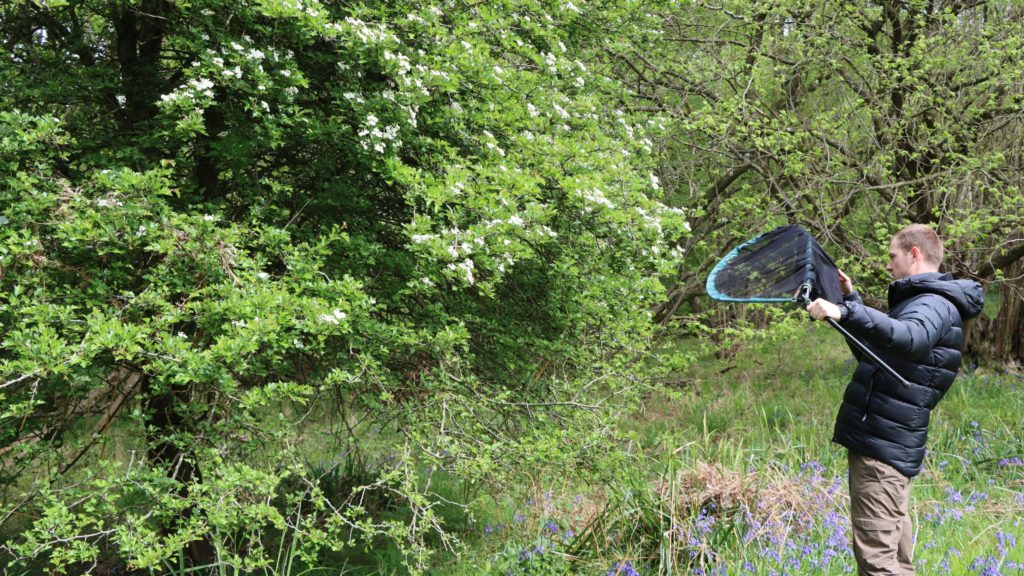
You should also look along some of the more open rides where a bit more sunlight gets into the woods. You tend to have greater floral displays there. A lot of these pollinators like to bask. So anywhere where there’s sunny dappled spots, they’ll sit on a leaf warming up in the sun.
Weather and time of year is really important when collecting insects, but more for some groups. Some things, like saproxylic beetles living in deadwood, can be collected all through the winter. The same applies to things that live in fungi.
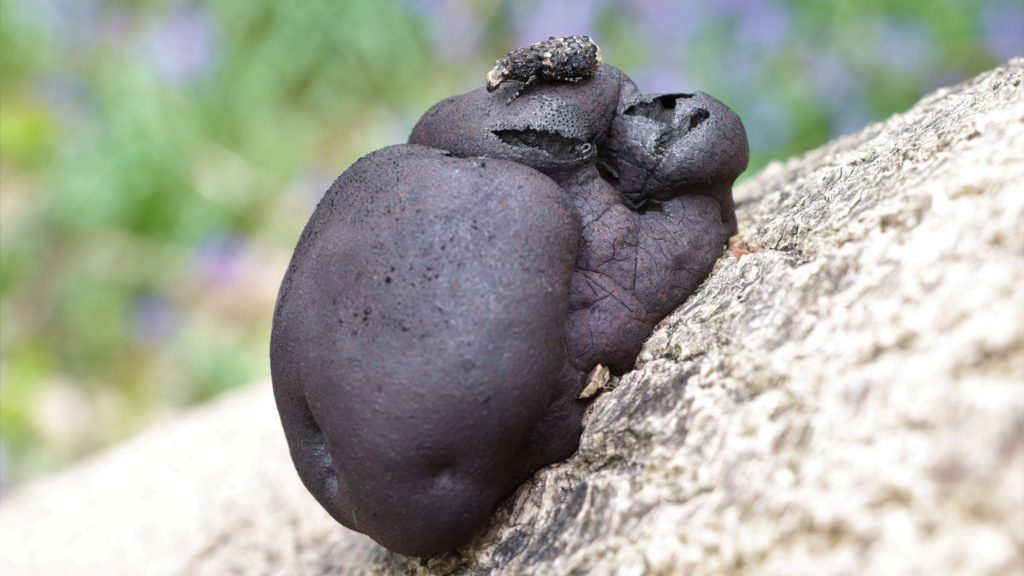
Whereas other things, such as pollinators and butterflies, are really dependent on the temperature. So we’re only able to find them on sunny days, and even only at sunny times during the day. If a cloud comes over, they’ll all disappear and then, within minutes of that cloud going, suddenly they’ll all be out and active again.
What happens once you collect a specimen?
We go out in the field and collect a sample. We then take that back to our lab facilities, which are in the woods itself. We can then flash freeze the sample on dry ice to ensure the DNA stays at the best quality.
We then send the samples to other Darwin Tree of Life partners. First of all, we send legs for DNA barcoding to the Natural History Museum in London.
Then, when the identification has been confirmed and we can track that specimen, the samples go off to the Wellcome Sanger Institute where they undergo DNA extraction.
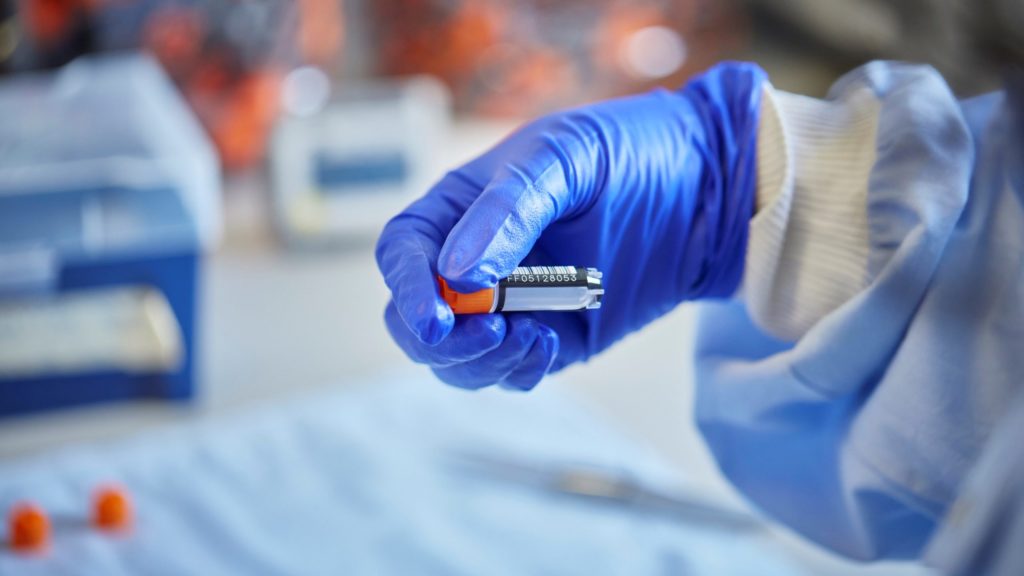
Once we have the DNA, that goes through DNA sequencing to turn the physical DNA into computer files. The DNA sequences go to the assembly team, which then build together these fragments into the complete genome. And finally, the genome is published.
All of the steps along that process are completely open access and available to the public to log on and look at that data.
What can genomes teach us?
One of the really nice things that we’re doing here in Oxford, as well as going out and finding all these genomes in Wytham Woods, is we’re beginning to analyse the genomes at the other end of the pipeline.
Once the genome is produced, we can then start to ask really interesting biological questions about what those genomes look like, how they have evolved, and how that might relate to the organism that they’ve come from, and in the context of their ecosystem in the woods.
There’s lots of stuff that we can learn from genomes. We always talk about it here at Oxford as two different ways of doing it. The first of which is looking at the genomes and looking for interesting patterns in those genomes, then trying to work out what effect that has on the organism’s biology.
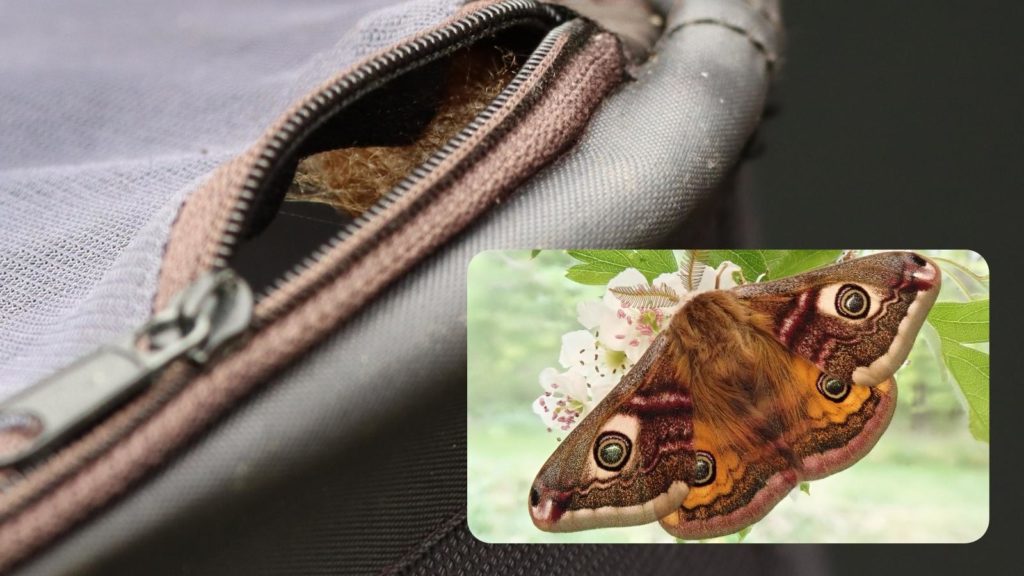
An example of this approach would be how we’re looking at the homeobox genes, which are important developmental regulatory genes. And then we found really interesting patterns within moths where some moths have these crazy duplications with these massive genes. We don’t really know what the function of that is, or even if it has a function.
The second approach is to take the opposite approach. We find an interesting bit of biology and look at groups of organisms which have that. We then try to go into the genome to see if there’s any similarities or differences between them.
So for example, we’re looking at the opsin genes which regulate eye development and we’re looking at this between day-flying and nocturnal moths to see if there’s any differences there.
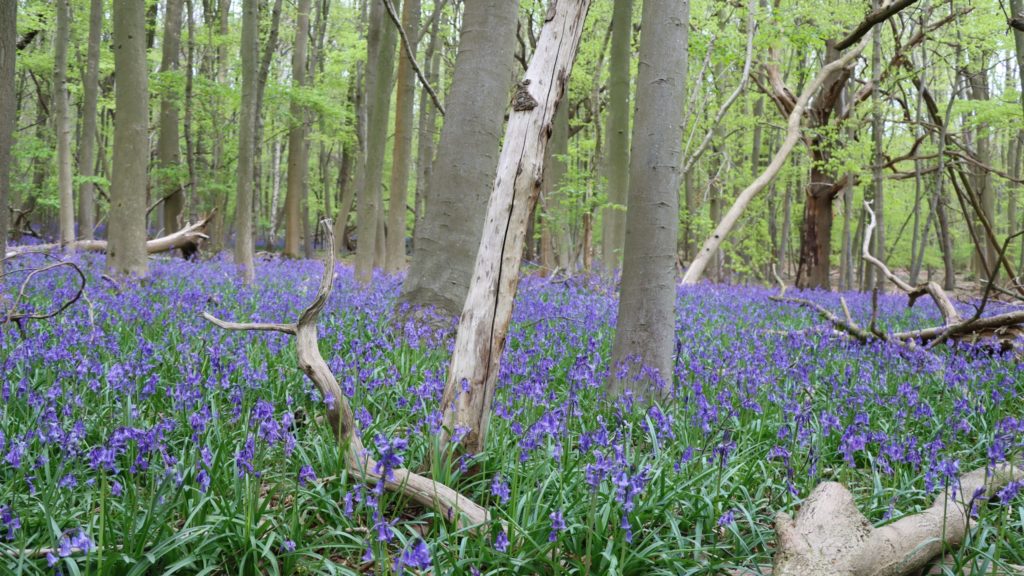
How do you think other scientists use Darwin Tree of Life genomes?
It’s very exciting for conservation, for example. Darwin Tree of Life is providing reference genomes, which are the essential first step for a lot of re-sequencing projects.
So if we want to work out how related a population of endangered species are to each other or look at genetic bottlenecks, we need to have the reference genome to find the loci within the genome that we can then go back and sample.
And once you have that reference genome, you suddenly unlock this whole other branch of methods, very cheaply and very quickly to re-sequence specific parts of the genome.
There’s lots of more applied discoveries that we can make from these genomes. In a sense, we don’t know what we don’t know. So there could be all sorts of potential benefits for new medicines or for new technologies.
